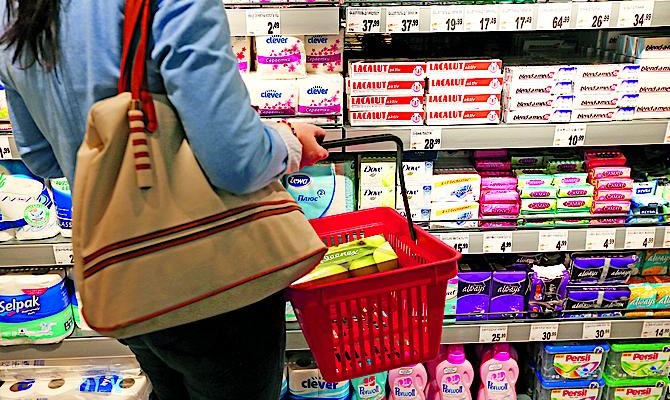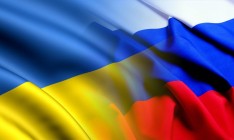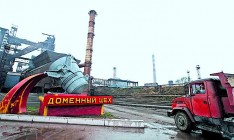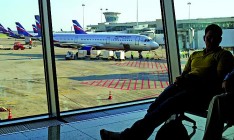Economy
friendshipThe Ministry of Economic Development and Trade prepared a list of Russian goods subject to import duties

The Ministry of Economic Development and Trade (MEDT) published a preliminary list of products subject to import duties introduced by the Cabinet of Ministers in response to a similar move from Russia. The list includes 36 commodity groups – from dog food to railway cars.
Unequal marriage
The list is very different from the one proposed to the ministry a month ago by experts at the Institute of Economics and Forecasting under the National Academy of Sciences of Ukraine. The list lacks 13 categories of commodities, such as pharmaceutical products, tanning extracts, ferrous metals and various chemical products, including insecticides and cement. At the same time, the list was supplemented by 10 new product categories, among which are fertilizers, railway transport, air conditioners, refrigerators and washing machines.
It is assumed that the duties would weaken the price competitiveness of the listed Russian products on the Ukrainian market. Yet, the measures taken by official Kyiv are apparently not an adequate response to Moscow, which launched a trade war. According to Capital’s estimates, last year imports of subgroups, including among others the goods on which the MEDT proposes to impose certain duties for Russia, was US $2.7 bn, or 12% of annual imports of Russian goods to Ukraine. This means that the actual import of products subject to the sanctions was even lower. Meanwhile, Ukraine’s exports to Russia have dropped by 24% just in seven months of 2014, depriving the country of US $2.2 bn in export earnings. As such, this is the first reason for revision of the proposed list.
Another reason to amend the list suggested by the specialized agency is the possible harm to Ukrainian businesses and consumers. For instance, the ministry intends to introduce tariff restrictions on imports of fertilizers. In 2013, Ukraine imported from Russia nitrogen, phosphate and compound fertilizers in the amount of US $565 mn. So, duties on these products alone will directly affect 2% of supplies from Russia and will create the largest gap in Russian exports to Ukraine.
However, Ukrainian buyers of these products – namely, agrarians – will suffer from such duties along with Russian suppliers. Last year 76% of these types of fertilizers were imported from Russia. Theoretically, Ukrainian products could replace Russian fertilizers. There are six companies producing fertilizers in Ukraine: four companies owned by the OstChem Holding incorporated within the structure of Dmytro Firtash’ Group DF, Dniproazot owned by Ihor Kolomoiskiy’s and Hennadiy Boholyubov’s Privat Group, as well as the Odesa Port Plant (OPP). But in practice the prices will rise not only for imported commodities, but also for local products, as it happened this summer after officials in Kyiv introduced the anti-dumping duty on Russian fertilizers.
“80% of Ukraine’s fertilizer market is covered by six companies, so their pricing is controlled by the Anti-monopoly Committee based on the prices of foreign competitors,” explains General Director of the Ukrainian Agribusiness Club Volodymyr Lapa. Consequently, domestic prices are adjusted with the rising costs of imports. Moreover, at present the production of fertilizers in Ukraine is in jeopardy because of the Cabinet’s ban on the use of gas at chemical plants. “In case enterprises involved in the production of fertilizers are cut off from supplies of natural gas, they will be forced to shut down,” reads the appeal of the All-Ukrainian Association of Employers of the Chemical Industry to Premier Arseniy Yatsenyuk.
Consumer goods will also end up in the line of fire. For example, the list includes those types of non-raw tobacco and tobacco products 59% of which are imported from Russia. There is a similar situation with hair care products, except for waving and straightening substances (42% is imported from Russia), detergents and cleaning agents packed for retail trade (33%), tea (27%), roasted coffee (25%), makeup products and skincare products, except for manicure and pedicure products and beauty powder (17%). Sometimes it is difficult to find an alternative to those products in the same price segment on the Ukrainian market. Hence, ordinary Ukrainians, for whom the shift to more expensive European products will be quite costly, may suffer from the imposition of duties on such Russian goods.
Inventory
Changes to the list will be made by the end of October, while public debate persists, said Deputy Minister of Economic Development and Trade Valeriy Pyatnytskiy. And their taking effect will depend on the actions of Moscow. Russia threatened to introduce its duties on Ukrainian products as soon as the economic part of the Association Agreement between Ukraine and the EU takes effect. “Such duties will be introduced if Ukraine starts applying the economic articles of the agreement ahead of the scheduled date (January 1, 2016 – Capital), which means it starts either legal implementation or practical application of those provisions,” said Russian Prime Minister Dmitry Medvedev. Even though on September 29 the EC officially confirmed that the free trade zone between Ukraine and the EU would not be opened until the end of 2015, the Ukrainian government fears that this would not restrain Moscow. Pyatnytskiy says Russia could impose duties when the agreement takes effect, in other words on November 1 of this year.






 of the agreement of syndication with Financial Times Limited are strictly prohibited. Use of materials which refers to France-Presse, Reuters, Interfax-Ukraine, Ukrainian News, UNIAN agencies is strictly prohibited. Materials marked
of the agreement of syndication with Financial Times Limited are strictly prohibited. Use of materials which refers to France-Presse, Reuters, Interfax-Ukraine, Ukrainian News, UNIAN agencies is strictly prohibited. Materials marked  are published as advertisements.
are published as advertisements.